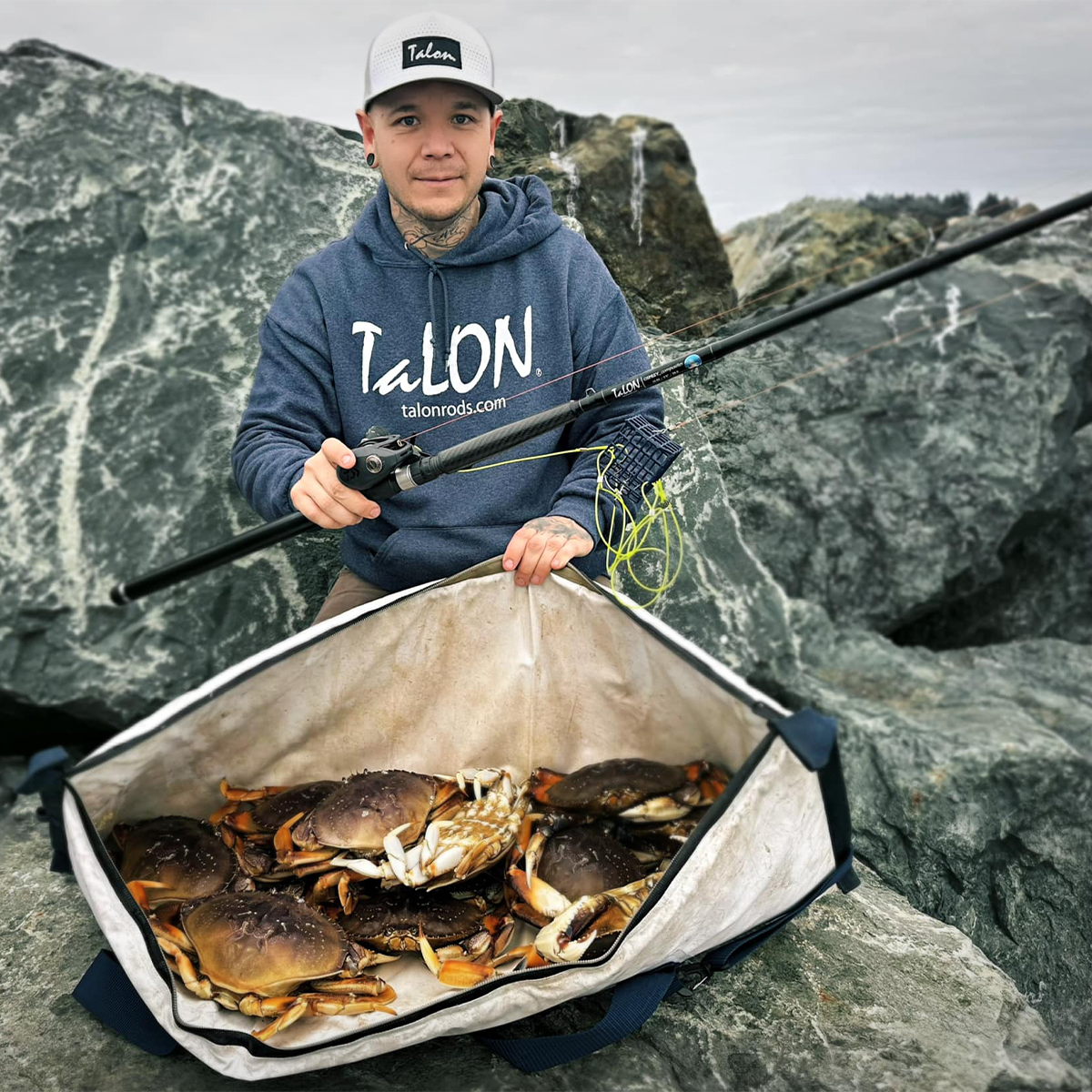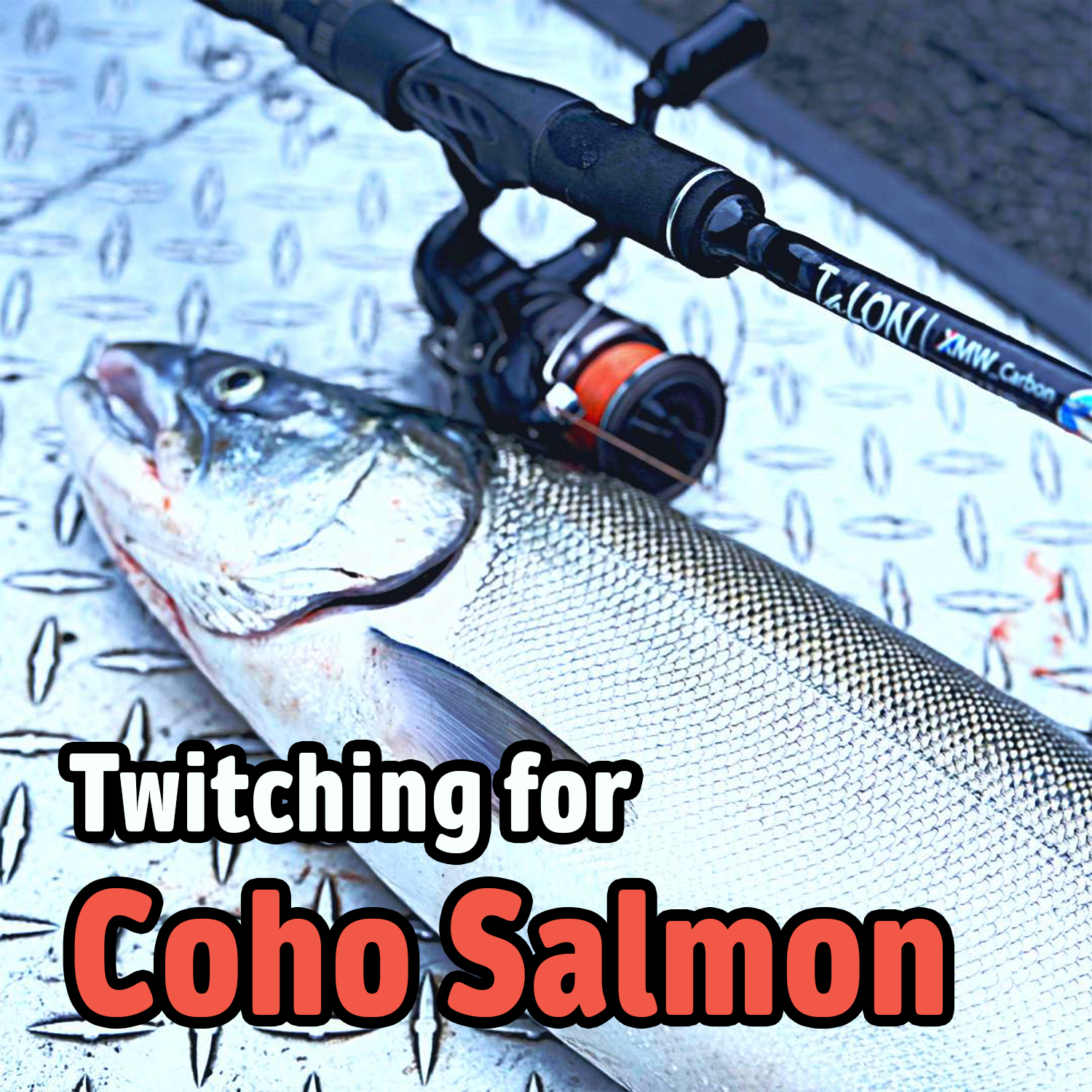Twitching is a popular technique for targeting coho salmon during their spawning season in rivers. Just to clarify, this technique is quite different from the viral dance craze of 2013, though both gained popularity around the same time. Twitching involves quickly moving your jig in an erratic motion and then letting it drop, creating a lifelike action that entices the fish. While it might seem straightforward, mastering twitching requires attention to detail. Here are five essential tips to help you elevate your twitching game to "Pro" status:

- Choose the Right Gear
- Rod: The key to success starts with the right twitching rod. Opt for a lightweight spinning rod that is 7 to 8 feet long with a moderate to fast action. A lightweight rod will give your jigs the necessary "snap" and prevent you from getting tired after a long day of fishing. The Talon XMW 7’9” is a great example of a top-notch twitching rod.
- Reel: Use a spinning reel with a carbon drag, ideally in the 2000 to 3000 size range. A gear ratio around 6:1 provides a good balance of torque and speed for handling the coho's powerful runs.
- Line: Go for a braided line in the 20-30lb range with 8 carriers. Braided line has minimal stretch compared to monofilament, which is crucial for detecting strikes and setting hooks effectively.
- Top Shot: Attach a 6-foot leader of quality fluorocarbon to your braided main line. This will facilitate easier jig tying, reduce tangles in the net, and help prevent snagging in the river's wood.
- Jigs: Equip yourself with a variety of jigs, ranging from 1/4oz to 3/4oz. Different water depths and speeds will require different jig weights. Opt for jigs in colors such as pink, purple, chartreuse, or black for the best results.
- Find the Right Location
- Structure: Coho salmon often hang around log jams or near piles of wood on the slower side of the river. Although fishing in these areas can be challenging, don’t hesitate to cast your jig behind a log.
- Standing Water: Look for deep, slow-moving water near swift currents. Coho tend to congregate in these spots.
- Master the Twitching Technique
- Cast: Let your jig sink to the desired depth.
- Twitch: Use quick jerks of your rod tip to create an erratic, jerky movement with the jig.
- Pause: After twitching, allow the jig to free fall. Coho often strike as the jig drops, so pause for a few seconds to give the fish a chance to react.
- Retrieve: Reel in the slack only when necessary. Ideally, aim to spin the reel handle once for every two twitches, adjusting as needed.
- Set the Hook
- Feel the Strike: When a coho hits, it’s usually a sudden, explosive bite followed by a drag-peeling run across the river.
- Fight the Fish: Coho salmon are powerful fighters. Allow them to run a few times without rushing the fight.
- Tips for Success
- Match the Twitch: Observe others who are successful and try to mimic their twitching technique.
- Experiment: Start with different jig colors and weights. If you’re not getting bites, try varying the depth and color.
- Be Patient: Twitching can require persistence. Continue casting and experimenting until you find what works. Once you do, repeat the successful technique.
By following these tips, you’ll be on your way to becoming a skilled coho twitcher. Remember, practice is key, so get out there and fish with confidence!





